
JOURNAL OF PLANT GROWTH REGULATION
Scope & Guideline
Innovating Agronomy Through Research and Discovery
Introduction
Aims and Scopes
- Plant Growth Regulators and Their Applications:
Research on various plant growth regulators (PGRs) such as jasmonic acid, gibberellins, and abscisic acid, exploring their roles in promoting growth, enhancing stress tolerance, and improving yield in various crops. - Abiotic Stress Responses:
Studies investigating how plants respond to abiotic stresses such as drought, salinity, heat, and heavy metal toxicity, focusing on physiological, molecular, and biochemical mechanisms. - Microbial Interactions and Plant Growth Promotion:
Research exploring the role of beneficial microbes, including plant growth-promoting rhizobacteria (PGPR) and arbuscular mycorrhizal fungi, in enhancing plant growth and stress tolerance. - Genetic and Epigenetic Regulation:
Investigations into the genetic and epigenetic factors that regulate plant responses to stress, including transcriptomic and proteomic analyses to identify key regulatory pathways. - Biostimulants and Sustainable Agriculture:
Studies on the use of biostimulants, including natural extracts and nanoparticles, to enhance plant growth, nutrient uptake, and resilience against environmental stresses. - Physiological and Morphological Adaptations:
Research examining the physiological and morphological changes in plants under various environmental conditions, including the role of phytohormones in mediating these adaptations.
Trending and Emerging
- Integrative Approaches to Stress Management:
There is a growing trend towards integrative strategies that combine various methods, such as the use of biostimulants, microbial inoculants, and environmentally friendly practices to enhance plant resilience against abiotic stresses. - Gene Editing and Biotechnology:
Research focusing on gene editing techniques, particularly CRISPR technology, is on the rise, as scientists explore ways to enhance stress tolerance and improve crop traits at the genomic level. - Nanotechnology in Agriculture:
The application of nanotechnology, particularly in the form of nanoparticles as fertilizers or biostimulants, is gaining traction, reflecting a trend towards innovative and efficient agricultural practices. - Secondary Metabolite Production:
There is an increasing focus on the role of secondary metabolites in plant defense mechanisms and their potential applications in improving crop resilience and quality. - Climate Change Adaptation Strategies:
Research addressing the impacts of climate change on plant growth and development, and strategies for adaptation, is becoming increasingly prominent, highlighting the need for sustainable agricultural practices.
Declining or Waning
- Traditional Breeding Techniques:
There has been a noticeable decline in publications focusing solely on traditional breeding methods, as genomic and biotechnological approaches gain more attention for crop improvement. - Single-Factor Studies:
Research that examines the effects of single environmental factors (e.g., only drought or only salinity) is becoming less common, with a trend towards studying multifactorial interactions that better reflect real-world conditions. - Basic Physiological Studies:
There is a decreasing focus on fundamental physiological studies without direct applications or implications for crop improvement or stress management, as applied research takes precedence. - Chemical Fertilizer Studies:
Research centered around the effects of chemical fertilizers alone is declining, with a shift towards integrated approaches that combine organic amendments, biostimulants, and sustainable practices.
Similar Journals
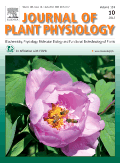
JOURNAL OF PLANT PHYSIOLOGY
Transforming Plant Research into Practical SolutionsJOURNAL OF PLANT PHYSIOLOGY, published by ELSEVIER GMBH, stands as a leading international journal dedicated to the field of plant physiology, agronomy, and crop science. With an impressive impact factor and recognition within the Q1 and Q2 quartiles across various categories, this journal consistently ranks among the top in its field—positioned at #65/516 in Plant Science and #52/406 in Agronomy and Crop Science as of 2023. Located in Munich, Germany, it serves as a vital platform for researchers, practitioners, and students to share groundbreaking insights and advancements. Although it does not currently offer open access, the journal provides an essential repository of knowledge, publishing significant original research, reviews, and discussions on plant function, regulation, and development, thereby shaping the future of agricultural practices and contributing to our understanding of biophysical processes. Researchers looking to publish in a reputable venue or to access cutting-edge studies will find JOURNAL OF PLANT PHYSIOLOGY an invaluable resource.
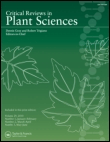
CRITICAL REVIEWS IN PLANT SCIENCES
Connecting global researchers in plant science.CRITICAL REVIEWS IN PLANT SCIENCES, published by Taylor & Francis Inc, is a prestigious journal that has been advancing the field of plant science since its inception in 1983. With an impressive impact factor and consistently ranked in the top quartile (Q1) of its category, this journal is a leading platform for the dissemination of peer-reviewed research that spans the breadth of plant biology, ecology, and agricultural applications. Housed in the United Kingdom, it serves an international readership, making significant contributions to our understanding of plant systems and their environmental interactions. This journal is highly regarded within the Scopus rankings, holding an impressive position of 18 out of 516 journals in the Agriculture and Biological Sciences category, placing it in the 96th percentile. Although not currently open access, the journal provides valuable insights and critical reviews that are essential for researchers, professionals, and students striving to further their knowledge and bolster their own research in plant sciences.

JOURNAL OF PLANT BIOCHEMISTRY AND BIOTECHNOLOGY
Leading the Charge in Plant Biotechnology AdvancementsJOURNAL OF PLANT BIOCHEMISTRY AND BIOTECHNOLOGY, published by SPRINGER INDIA, is a leading publication dedicated to advancing research in the fields of plant biochemistry, biotechnology, agronomy, and crop science. With an ISSN of 0971-7811 and E-ISSN 0974-1275, the journal encompasses a wide range of studies aimed at enhancing our understanding of plant biological processes and their applications in agriculture and biotechnology. It has achieved a noteworthy Q2 ranking in Agronomy and Crop Science and Plant Science, as well as a Q3 ranking in Biotechnology, reflecting its quality and relevance in contemporary research. Notably, the journal ranks #166 in Plant Science and #133 in Agronomy, both falling in the top 67th percentile. With a rich history spanning from 1992 to 2024, the journal is committed to providing open access to innovative research findings that bridge the gap between laboratory discoveries and their practical applications in sustainable agriculture. Researchers, professionals, and students will find a wealth of knowledge and inspiration to advance their work in the dynamic field of plant sciences at this esteemed journal.
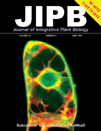
Journal of Integrative Plant Biology
Connecting Ideas, Cultivating UnderstandingThe Journal of Integrative Plant Biology, published by WILEY, is a premier academic journal that has been at the forefront of advancing research in plant biology since its inception in 2005. With a notable impact factor and a robust Scopus ranking—positioned at #7 out of 516 in Plant Science and #18 out of 438 in Biochemistry—this journal is recognized as a Q1 journal in multiple categories, including Biochemistry and Plant Science. The journal aims to bridge the gaps between various disciplines in plant research, emphasizing integrative and interdisciplinary approaches to understanding plant biology. With options for open access, the Journal of Integrative Plant Biology ensures broad visibility and impact of research findings, making it an invaluable resource for researchers, professionals, and students looking to stay informed on innovative advancements in the field. Its headquarters are located in the United Kingdom, further amplifying its reach within the global academic community.

BANGLADESH JOURNAL OF BOTANY
Nurturing the Future of Botanical ResearchBANGLADESH JOURNAL OF BOTANY is a prominent publication in the field of plant sciences, dedicated to advancing research and knowledge within the botanical community. Published by the BANGLADESH BOTANICAL SOC, this journal serves as a vital platform for researchers and scholars seeking to disseminate their findings related to plant biology, ecology, and conservation practices, particularly within the unique context of Bangladesh's diverse flora. With an ISSN of 0253-5416 and an E-ISSN of 2079-9926, the journal encompasses a wide scope of topics, reflecting interdisciplinary approaches in botanical research. Since its inception, with convergence periods from 1996 to 2001 and from 2003 to 2024, it has garnered recognition, positioned in the Q4 category in the Plant Science field with a ranking of #459/516 in Scopus, indicating its contribution to the field despite its developing impact. Operating within Bangladesh, at the UNIV DACCA DEPT BOTANY, the journal provides a crucial insight into the ecological and agricultural implications of plant studies in the region, catering to the needs of academics, professionals, and students eager to engage with contemporary botanical research.

Plant Stress
Advancing Knowledge in Plant Stress BiologyPlant Stress is a prestigious academic journal published by Elsevier that focuses on the critical study of stress responses in plants, bridging vital areas such as ecology, evolution, and plant science. With its ISSN 2667-064X, this journal serves as an essential platform for researchers and professionals seeking to explore innovative findings and advancements in plant stress biology. Its notable rankings in the Q1 category for both Ecology, Evolution, Behavior, and Systematics and Plant Science as of 2023 further establish its significance, being recognized in the top quartile of its field. The journal’s impressive Scopus ranks, including Rank #144/721 and Rank #107/516 in the respective categories, highlight its influence and the quality of research it disseminates. While currently not offering Open Access, Plant Stress is instrumental in fostering academic dialogue and collaboration among researchers worldwide, with implications that extend beyond theoretical studies into practical applications in agriculture and environmental management. For those dedicated to understanding plant resilience and stress adaptation, Plant Stress is an indispensable resource.
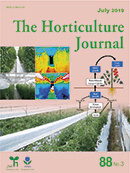
Horticulture Journal
Connecting Researchers to Sustainable SolutionsThe Horticulture Journal, published by the Japan Society for Horticultural Science, is a leading academic platform dedicated to the advancement of horticultural research and practices. With an ISSN of 2189-0102 and an E-ISSN of 2189-0110, this journal endeavors to publish high-quality research that emphasizes innovative techniques, sustainable practices, and the science of plant cultivation. The journal has been recognized for its impact within the field, currently holding a Q2 ranking in Horticulture and a Q3 ranking in Plant Science as of 2023, indicating its significant contribution to advancing knowledge. With its open-access model, researchers, professionals, and students have the opportunity to engage with the latest findings, thanks to the journal's commitment to widespread dissemination of information. Since its convergence period began in 2015 and continuing through to 2024, the Horticulture Journal remains instrumental in promoting sustainable and beneficial practices in horticulture science globally.

Botanical Studies
Fostering Global Dialogue in Botanical ResearchBotanical Studies is a premier open-access journal published by Springer, dedicated to the field of botany and plant sciences. Since its establishment in 2006, the journal has championed innovative research and scholarship that explores diverse botanical topics ranging from plant systematics to ecology and conservation. With a commitment to broad accessibility, it promotes the dissemination of knowledge to researchers, professionals, and students worldwide. Botanical Studies fosters academic collaboration and dialogue, contributing significantly to the global botanical community. Its open-access policy allows unrestricted access to its high-quality, peer-reviewed content, ensuring that vital research is available to all. Join the growing community of scholars advancing botanical science through this essential publication, conveniently located at One New York Plaza, Suite 4600, New York, NY 10004, United States.
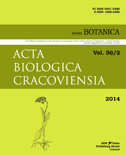
ACTA BIOLOGICA CRACOVIENSIA SERIES BOTANICA
Exploring biodiversity and conservation in every issue.ACTA BIOLOGICA CRACOVIENSIA SERIES BOTANICA is a distinguished journal published by the Polska Akademia Nauk (Polish Academy of Sciences), with its roots tracing back to 1996. As a pivotal publication in the field of Plant Science, it serves to disseminate high-quality research and findings, contributing to the ongoing development and understanding of biodiversity, plant ecology, and conservation. The journal is indexed under Scopus, ranked #203 out of 516 in its category, placing it in the 60th percentile and firmly within Q3 quartile for Plant Science in 2023. Researchers, professionals, and students will find invaluable content within its pages, enhancing their knowledge and supporting academic exploration. Although it currently does not offer open access options, the journal remains a crucial resource for those engaged in botanical sciences, with a commitment to advancing scholarship in Poland and beyond.

FUNCTIONAL PLANT BIOLOGY
Innovating Solutions in Functional Plant BiologyFUNCTIONAL PLANT BIOLOGY is a prestigious academic journal published by CSIRO PUBLISHING, specializing in the dynamic fields of Agronomy and Crop Science as well as Plant Science. With an ISSN of 1445-4408 and an E-ISSN of 1445-4416, this journal provides a platform for innovative research that addresses key challenges in plant functional biology, ranging from genetics and physiology to ecological interactions. As evidenced by its impact factor and competitive rankings, including Q1 in Agronomy and Crop Science and Q2 in Plant Science, FUNCTIONAL PLANT BIOLOGY holds a significant place in the scientific community, ranking in the top tiers of Scopus for both categories. The journal supports open access options, ensuring that critical research is widely disseminated and accessible to researchers, professionals, and students around the globe. With a publication history spanning from 2002 to 2024, the journal continues to foster the advancement of plant science, making significant contributions to sustainable agricultural practices and ecological research in Australia and beyond.